The Ultimate Guide to French Cheesecake
French cheesecake is a dessert that exudes elegance, simplicity, and deliciousness. From its rich history and distinct variations to tips on crafting your own, this article takes you on a culinary journey through everything there is to know about this delightful dessert. Whether you’re a seasoned baker or a curious foodie, this guide covers it all. So, grab a cup of tea, and let’s explore the creamy, dreamy world of French cheesecake.
Table of Contents
Introduction to French Cheesecake
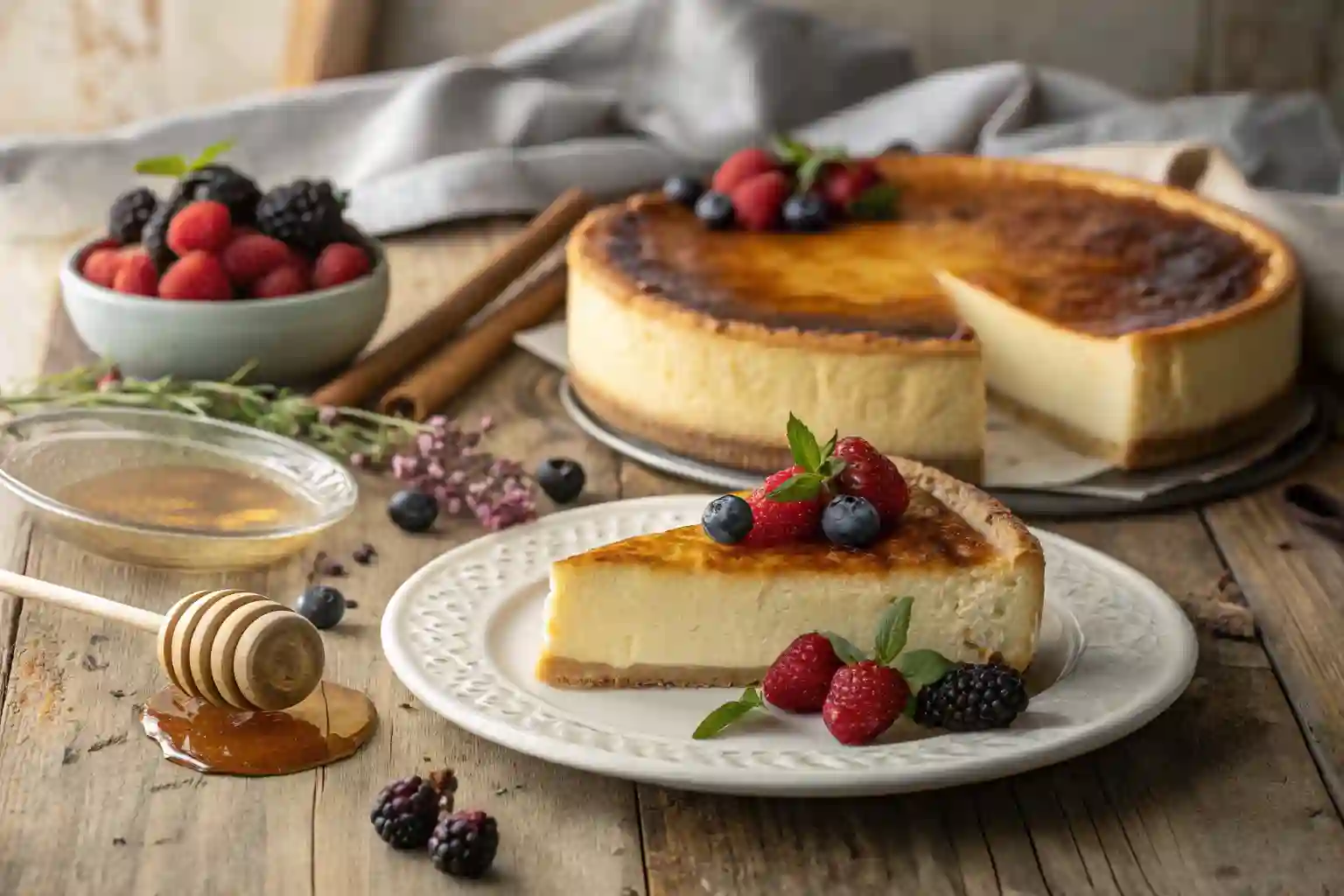
French cheesecake holds a unique place in the world of desserts. Unlike its American cousin, it’s often lighter, more delicate, and infused with a rustic charm that makes it stand out. This part introduces you to what makes French cheesecake special and why it deserves a spot on your dessert table.
What is French Cheesecake?
French cheesecake is a decadent dessert that balances rich, creamy textures with a subtle tanginess. Unlike traditional New York cheesecake, creamy cheesecake relies on ingredients like fromage blanc, goat cheese, or crème fraîche, giving it a lighter and airier finish.
What’s more, this cheesecake is often less sweet, letting the natural flavors of the cheese shine. It can be baked or no-bake, depending on the recipe, but it always retains its signature smoothness and refined flavor.
Why is it Unique Compared to Other Cheesecakes?
Here’s the kicker: French cheesecake isn’t just one thing. It comes in various forms, from the lightly burnt Tourteau Fromagé to the creamy Gâteau au Fromage Blanc. Each version showcases the regional flavors and ingredients of France.
What sets it apart from American or European cheesecakes is its simplicity. Instead of being laden with heavy toppings, French cheesecake often has a minimalist crust or no crust at all. The emphasis is on the filling, which is smooth, light, and oh-so-flavorful.
French cheesecake also caters to diverse tastes. Whether you’re looking for a low-carb, gluten-free option or something more traditional, there’s a variation for every palate.
A Brief History of French Cheesecake
French cheesecake has a fascinating history rooted in tradition and culinary artistry. From its humble beginnings to its place as a sought-after dessert, this part unravels the origins and evolution of French cheesecake over time.
Origin of French Cheesecake
The story of creamy cheesecake begins centuries ago in rural France, where cheesemaking was an essential part of everyday life. The dessert is thought to have originated in the Poitou-Charentes region, home to the iconic Tourteau Fromagé. This unique cheesecake, with its burnt-black crust and airy interior, was traditionally baked in wood-fired ovens.
French peasants crafted these early cheesecakes using fromage blanc—a fresh, tangy cheese made from cow’s milk. The combination of simple ingredients like eggs, sugar, and cheese created a dessert that was both economical and delicious. Over time, the recipe spread across France, adapting to regional tastes and available ingredients.
Evolution of Cheesecake in French Cuisine
As French cuisine gained international acclaim, so did its desserts, including cheesecake. Over the years, bakers began experimenting with different cheeses, such as goat cheese and crème fraîche, to create variations on the classic recipe. French cheesecake also evolved to incorporate flavors like vanilla, citrus, and almond, enhancing its appeal.
In modern times, creamy cheesecake has become a symbol of sophistication. It’s featured in patisseries and high-end restaurants across the globe, offering a refined alternative to heavier, sweeter styles of cheesecake. Despite these innovations, the essence of French cheesecake—its light, creamy texture and subtle sweetness—remains unchanged.
Types of French Cheesecakes
One of the most delightful aspects of French cheesecake is its variety. From rustic regional specialties to contemporary twists, there’s a type of French cheesecake for everyone. Let’s dive into some of the most popular versions.
Tourteau Fromagé: The Traditional French Cheesecake
Tourteau Fromagé is the quintessential French cheesecake from the Poitou-Charentes region. Its signature look—a charred, domed crust—hints at its unique preparation. Traditionally, this cheesecake is baked at high heat to create the burnt exterior while keeping the interior light and airy.
The filling of Tourteau Fromagé is made with fromage blanc, eggs, and a touch of sugar. It’s a perfect balance of textures: crispy on the outside and fluffy on the inside. This cheesecake is often served plain, letting its subtle flavors shine.
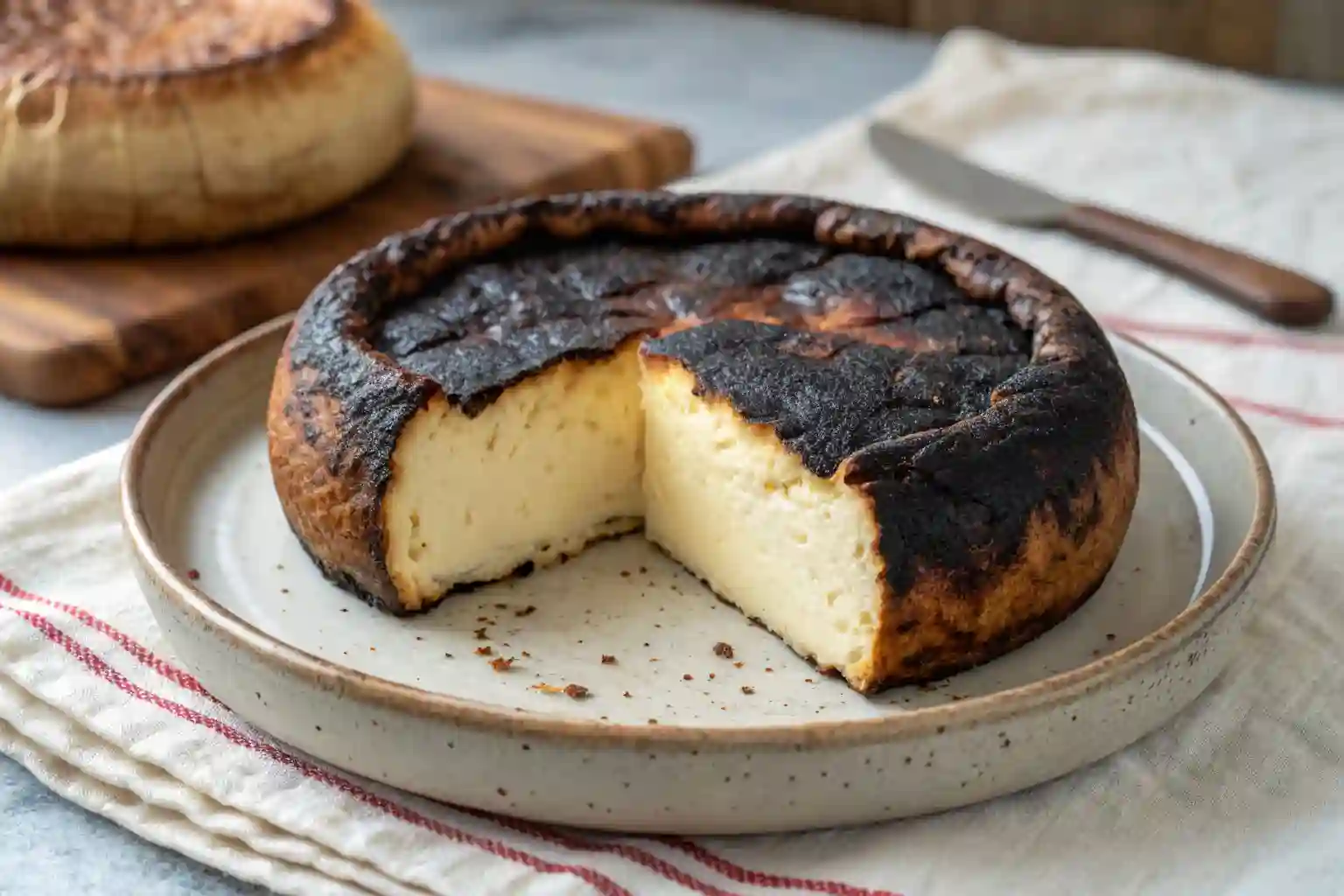
Gâteau au Fromage Blanc: A Delicate Alternative
Another beloved variety is Gâteau au Fromage Blanc, a creamy and delicate dessert that highlights the tangy freshness of fromage blanc. Unlike Tourteau Fromagé, this version has a smooth surface and is often baked in a shallow pan.
Gâteau au Fromage Blanc is light and custard-like, making it a popular choice for those who prefer a less dense dessert. Sometimes flavored with lemon zest or vanilla, it pairs beautifully with fresh berries or a dusting of powdered sugar.
French-Style Basque Cheesecake
French-style Basque cheesecake is a modern twist on traditional recipes. Inspired by Basque burnt cheesecake, this variation features a caramelized, crackly top and a rich, creamy center. While it shares similarities with the original Basque recipe, the French version often incorporates local ingredients like goat cheese or crème fraîche.
This cheesecake has a bold flavor and is typically served warm, making it a comforting dessert option. Its rustic appearance and complex taste make it a favorite among foodies and chefs alike.
Ingredients Used in creamy cheesecake
One of the secrets behind the irresistible flavor of French cheesecake lies in its carefully selected ingredients. This part delves into the core components that bring this dessert to life, as well as suitable substitutes for global bakers.
Key Ingredients: Fromage Blanc, Goat Cheese, and Cream Cheese
At the heart of traditional French cheesecake is fromage blanc, a soft, tangy cheese that gives the dessert its signature lightness and creamy texture. This ingredient, widely used in France, adds a subtle tanginess that balances the sweetness.
Other varieties of French cheesecake incorporate goat cheese or crème fraîche, adding a rich, slightly earthy flavor. These cheeses provide a luxurious creaminess that elevates the dessert, making it truly unique.
Cream cheese is also a popular choice, particularly for international bakers who may not have access to traditional French ingredients. While it creates a denser texture, it still produces a delightful cheesecake.
Substitutes for Traditional Ingredients in Non-French Markets
If fromage blanc isn’t readily available, ricotta or Greek yogurt can be used as alternatives. These substitutes mimic the creamy and tangy profile, ensuring your cheesecake retains its authentic taste.
Similarly, sour cream or mascarpone can replace crème fraîche for a luscious finish. When baking, don’t hesitate to experiment with locally available ingredients to create your own twist on this classic dessert.
How to Make a Classic French Cheesecake
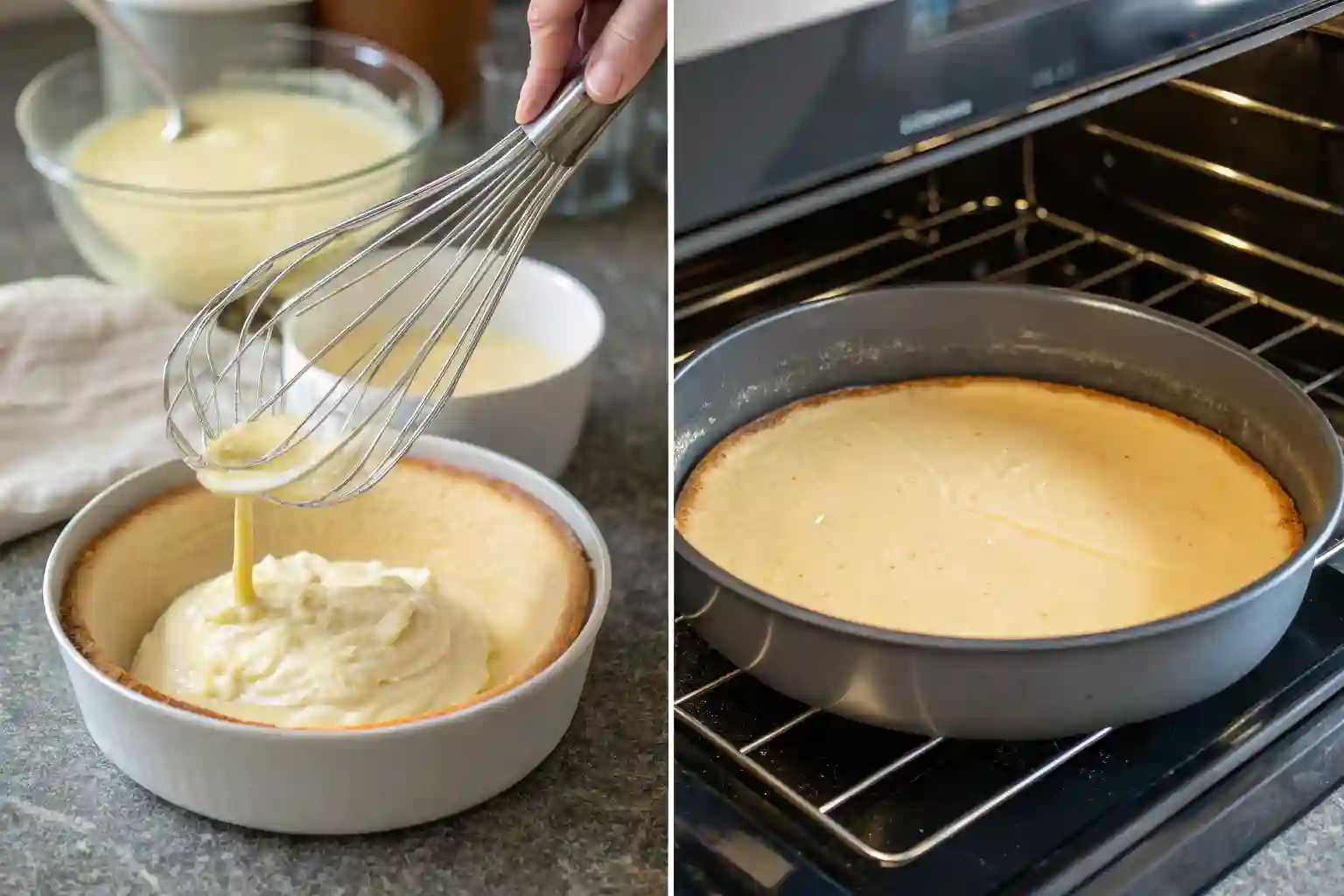
Making a classic French cheesecake at home is simpler than you might think. Follow these steps to create a dessert that’s sure to impress.
Step-by-Step Recipe: Ingredients and Preparations
- Gather the ingredients: You’ll need fromage blanc (or a substitute), eggs, sugar, and a touch of vanilla. If using a crust, prepare it with graham crackers or almond flour.
- Prepare the filling: Blend the cheese, eggs, sugar, and vanilla until smooth. This ensures the cheesecake will be creamy and lump-free.
- Assemble the cheesecake: Pour the mixture into a prepared pan, smoothing the top for an even bake.
- Bake: Place the pan in a water bath to prevent cracking, then bake at a moderate temperature until set.
Baking Tips for a Perfect French Cheesecake
- Use room-temperature ingredients for a smoother filling.
- Avoid overmixing, as this can introduce air bubbles, leading to cracks.
- Let the cheesecake cool gradually to prevent sinking.
Common Mistakes to Avoid
- Skipping the water bath: This step ensures even baking and avoids a dry texture.
- Overbaking: French cheesecake should be slightly wobbly in the center when removed from the oven. It will firm up as it cools.
- Using cold ingredients: This can result in a lumpy filling, compromising the creamy texture.
Part 6: Popular Variations of French Cheesecake
One of the best things about French cheesecake is its versatility. From classic recipes to innovative adaptations, there’s something for every palate. This section highlights a few popular variations you can try at home or find in patisseries.
Low-Carb and Gluten-Free French Cheesecake
For those looking to enjoy creamy cheesecake while sticking to dietary preferences, low-carb and gluten-free options are a perfect choice. These versions often replace traditional crusts with almond flour or crushed nuts, creating a crispy yet healthy base.
The filling is made with sugar alternatives like erythritol or stevia, paired with cream cheese or fromage blanc. The result? A lighter dessert that doesn’t compromise on taste. Whether you’re following a keto plan or simply cutting carbs, this variation will satisfy your sweet tooth.
Seasonal French Cheesecake Variants: Citrus, Berries, and More
Seasonal ingredients can elevate French cheesecake, bringing fresh and vibrant flavors to the table. In spring, strawberries and raspberries make excellent toppings, while summer calls for zesty citrus flavors like lemon or orange. For fall, add a touch of cinnamon and baked apples to the mix.
These variations not only taste incredible but also showcase the adaptability of creamy cheesecake. By using what’s fresh and in season, you can create a dessert that feels both special and timely.
Serving and Pairing Suggestions
The way you serve and pair French cheesecake can elevate it from a simple dessert to an unforgettable dining experience. This section provides ideas to make your cheesecake presentation shine.
How to Serve French Cheesecake
Presentation is key when it comes to creamy cheesecake. For an elegant touch, dust the top with powdered sugar or garnish it with fresh fruit. Alternatively, drizzle honey or a light fruit syrup over each slice for added sweetness.
When serving at a dinner party, consider individual portions for a polished look. Mini cheesecakes served in ramekins or mason jars can make a charming impression.
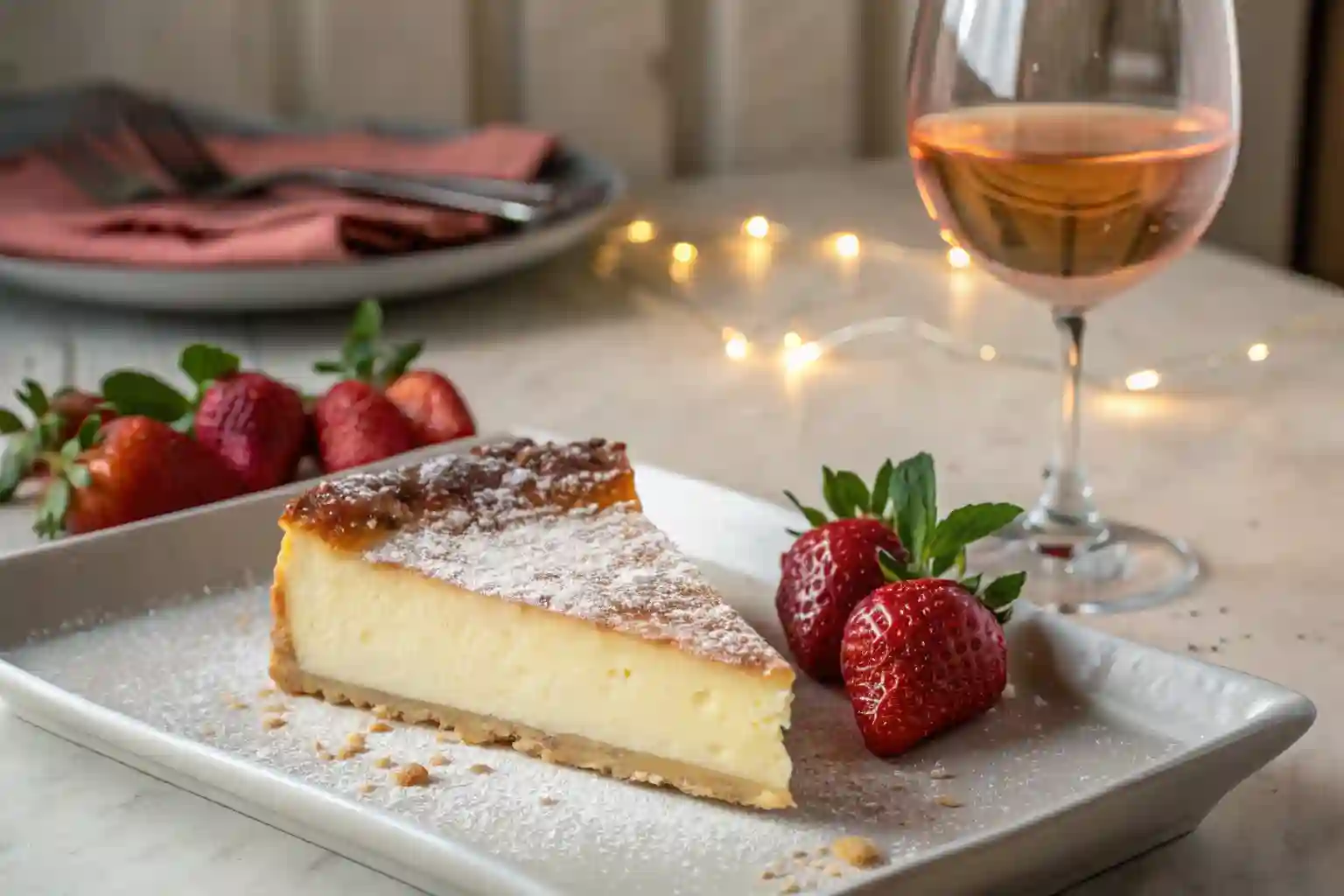
Best Wines and Beverages to Complement French Cheesecake
Pairing French cheesecake with the right drink can enhance its delicate flavors. Sweet white wines like Sauternes or late-harvest Rieslings are excellent choices. Their fruity notes balance the tanginess of the cheesecake beautifully.
For non-alcoholic options, consider herbal teas like chamomile or a simple iced tea with a hint of lemon. These beverages provide a refreshing contrast to the rich, creamy dessert.
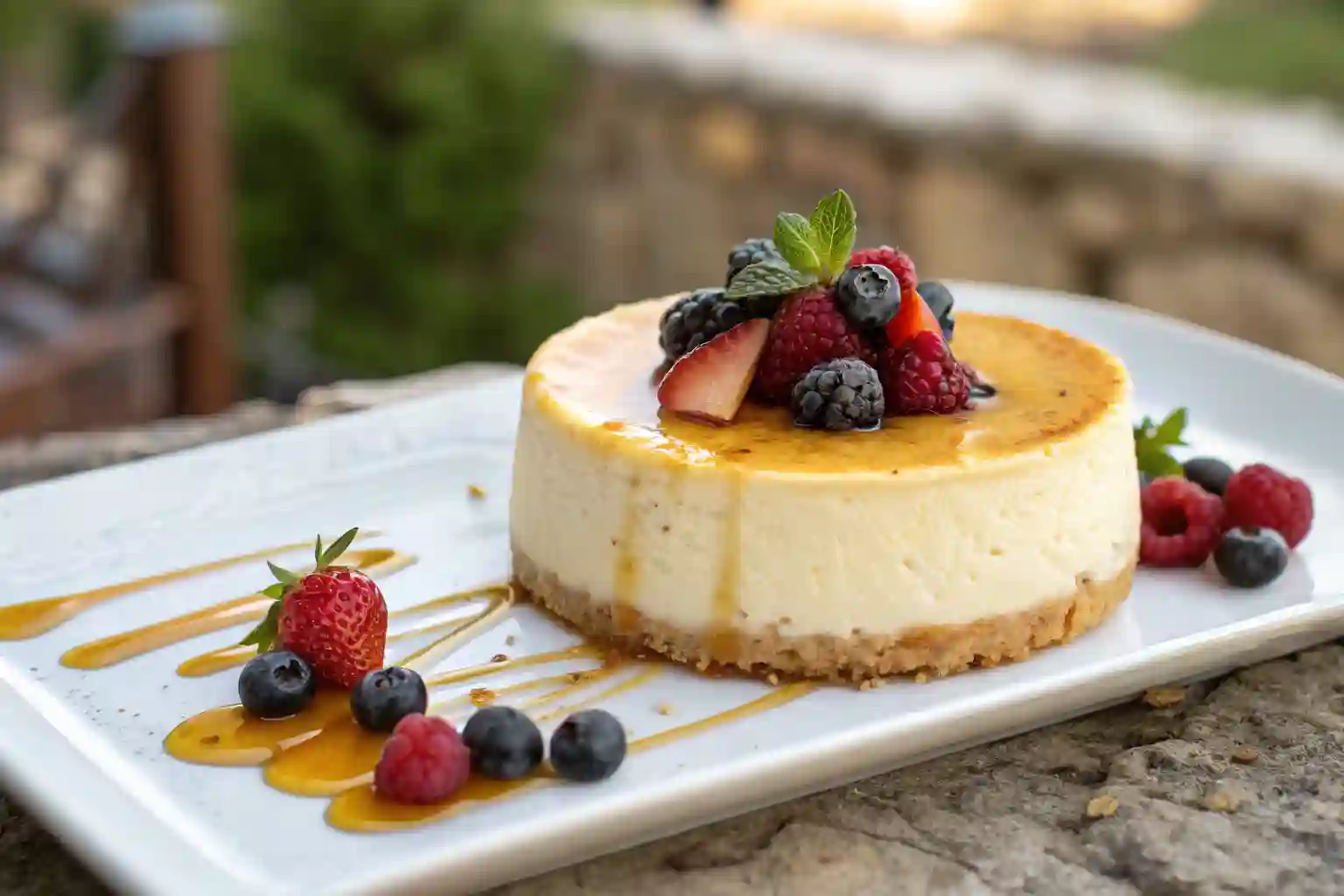
Classic French Cheesecake
Equipment
- 9-inch springform pan
- Mixing bowls (large and medium)
- Electric mixer or hand whisk
- Measuring cups and spoons
- Spatula
- 9-inch round cake or tart pan (if not using a springform pan)
- Cooling rack
- Sifter (for dusting powdered sugar)
Ingredients
- 2 cups fromage blanc or ricotta as an alternative
- 3 large eggs room temperature
- 1 cup granulated sugar
- 1 teaspoon vanilla extract
- 1 tablespoon lemon zest
- 1 tablespoon all-purpose flour
- Pinch of salt
- 1 pre-baked graham cracker crust optional
- Powdered sugar for dusting optional
Instructions
- Preheat the oven to 325°F (160°C). If using a crust, place it in the bottom of a 9-inch springform pan.
- In a large mixing bowl, beat the fromage blanc (or ricotta) until smooth.
- Add sugar, vanilla extract, and lemon zest. Continue mixing until the mixture is smooth and well combined.
- Add eggs one at a time, beating well after each addition.
- Add flour and a pinch of salt, and mix until fully incorporated.
- Pour the cheesecake mixture into the prepared crust or into the pan if no crust is used.
- Bake for 45-50 minutes, or until the center is set but still slightly jiggly.
- Turn off the oven and leave the cheesecake in the oven with the door ajar for 30 minutes to cool.
- Remove from the oven and let it cool completely at room temperature. Then refrigerate for at least 4 hours or overnight.
- Dust with powdered sugar before serving, or top with fresh berries for an added touch.
Notes
For added richness, you can substitute some of the fromage blanc with cream cheese, but keep the ratio of lighter cheese to maintain the airy texture.
Serve with a drizzle of honey or a fresh fruit compote for an added burst of flavor.
FAQs About French Cheesecake
When exploring the world of this dessert, you may have some lingering questions. From baking techniques to ingredient swaps, here are answers to the most frequently asked questions about this delightful dessert.
What Makes French Cheesecake Different from New York Cheesecake?
The biggest difference lies in texture and ingredients. French cheesecake is typically lighter and more delicate, thanks to the use of fromage blanc or crème fraîche, while New York creamy cheesecake uses cream cheese for a denser, richer texture. French cheesecake often forgoes a crust or uses a minimal one, letting the filling take center stage.
Can I Use Cream Cheese Instead of Fromage Blanc?
Yes, you can! While fromage blanc adds a tangy lightness, cream cheese is a suitable alternative if it’s easier to find in your area. To replicate the tanginess, consider blending cream cheese with Greek yogurt or sour cream. This combination creates a similar profile that still allows your French cheesecake to shine.
How Do I Store French Cheesecake Properly?
Proper storage ensures your cheesecake stays fresh and delicious. Keep your French cheesecake in the refrigerator, tightly covered, for up to three days. If you plan to store it longer, freeze individual slices in airtight containers. When ready to serve, thaw in the fridge to maintain its creamy texture.
Related Recipes to Explore
If you’ve fallen in love with creamy cheesecake, you’ll be delighted to know there are other similar desserts that share its elegance and flavor profile. Here are a couple of related recipes to inspire your next baking adventure.
French Custards and Flans
Custards and flans are cousins to creamy cheesecake, offering silky textures and rich flavors. Classics like crème brûlée and pots de crème use similar techniques and ingredients, such as eggs and cream, for that melt-in-your-mouth experience. These desserts are perfect for anyone who loves creamy, refined treats.
European Cheesecake Inspirations
Beyond France, many European countries boast their own versions of cheesecake. For instance, German Käsekuchen is made with quark, offering a unique texture and taste. Italian ricotta cheesecake brings a fluffy, slightly grainy twist to the classic. Exploring these variations is a wonderful way to expand your dessert repertoire.
For more dessert ideas, visit Yumytasty’s Dessert Preparation Guide to discover creative tips for showcasing your creations.
Conclusion
Why You Should Try Making French Cheesecake at Home
If you’ve ever wanted to experience the elegance of this dessert desserts, French cheesecake is the perfect place to start. Its light, creamy texture and subtle flavors make it a standout choice for any occasion. Unlike other cheesecakes, this French version focuses on simplicity and authenticity, relying on high-quality ingredients to create a dessert that feels both luxurious and approachable.
Making French cheesecake at home gives you the freedom to experiment with ingredients, flavors, and presentation, allowing you to tailor it to your tastes. When you follow traditional recipes or add your own creative spin, you will impress family and friends with the results.
Final Thoughts on French Cheesecake’s Appeal
What truly sets creamy cheesecake apart is its unmatched versatility. Whether you prefer rustic variations like Tourteau Fromagé or modern twists featuring seasonal flavors, this dessert effortlessly adapts to any occasion. Moreover, its simplicity makes it accessible to both seasoned bakers and beginners alike.
For instance, you can pair it with a sweet wine to enhance its richness, serve it with fresh fruit for a refreshing contrast, or enjoy it plain to savor its creamy texture. Additionally, the dessert’s ability to complement different settings—be it a casual brunch or an elegant dinner—makes it a timeless choice.
So, why wait? Grab your mixing bowl, preheat your oven, and dive into the delightful world of creamy cheesecake. With its delicate texture, subtle sweetness, and timeless charm, it’s guaranteed to become one of your favorite recipes. Furthermore, once you experience its appeal, you’ll understand why it’s cherished by dessert lovers around the world.


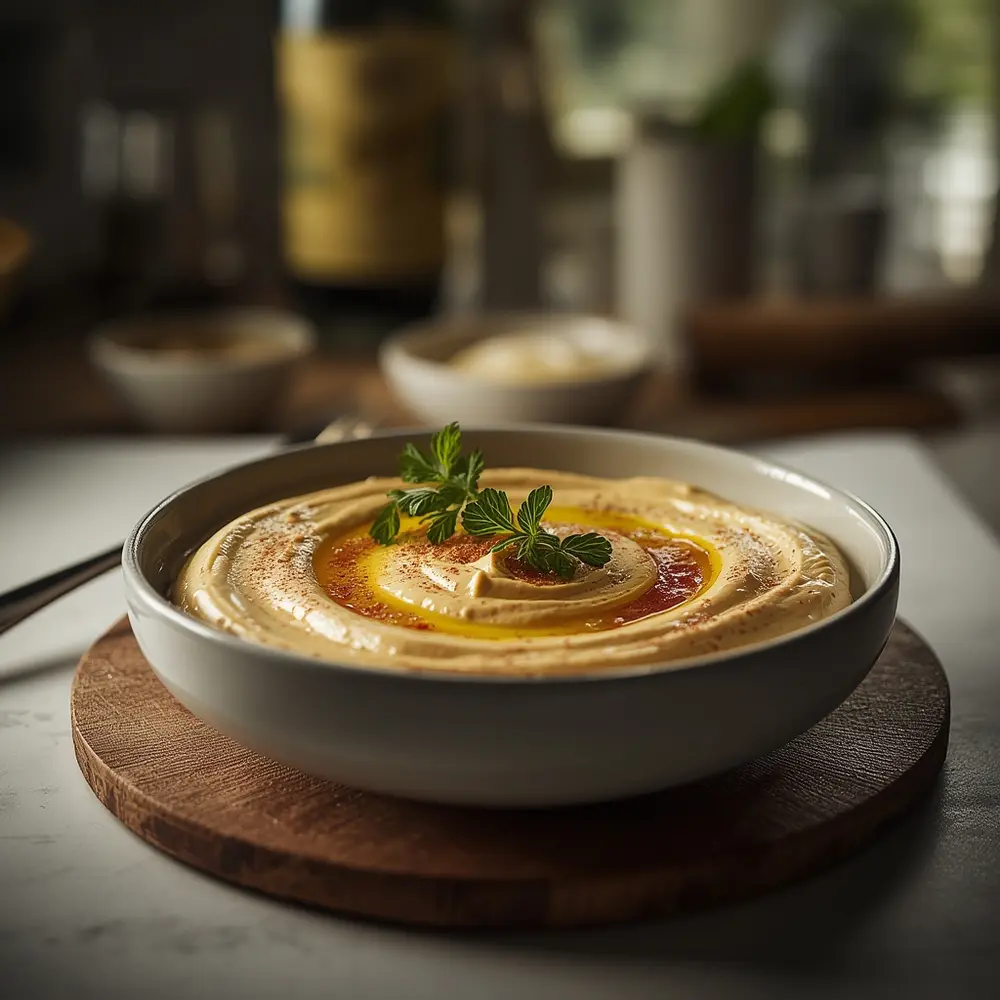
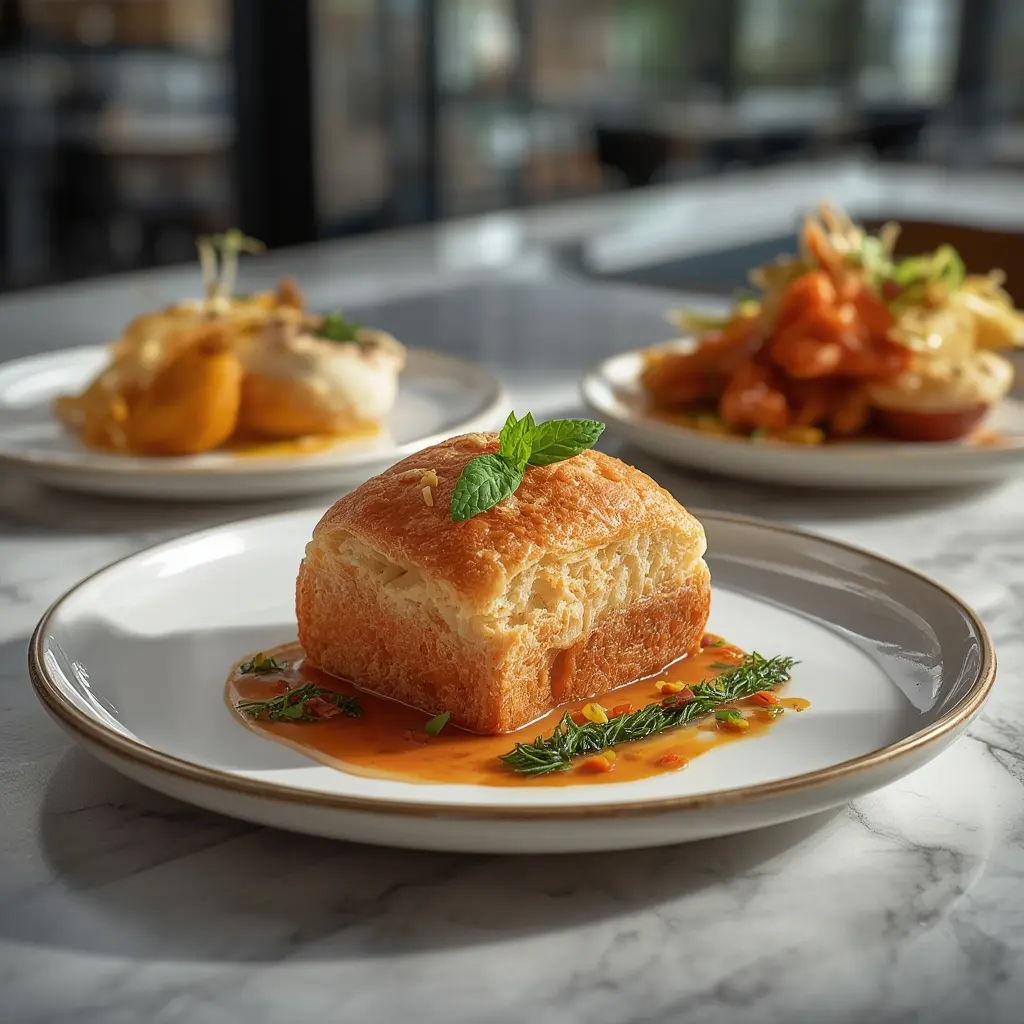
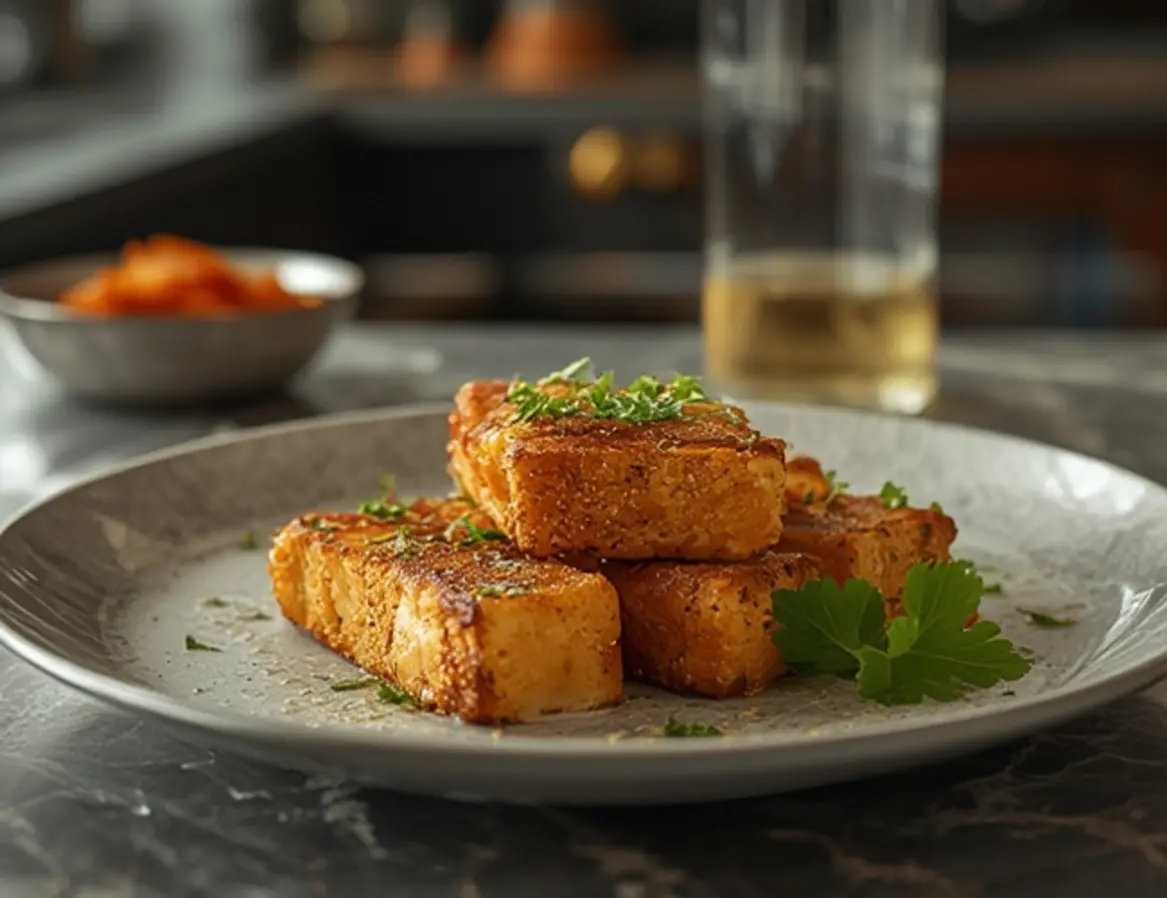
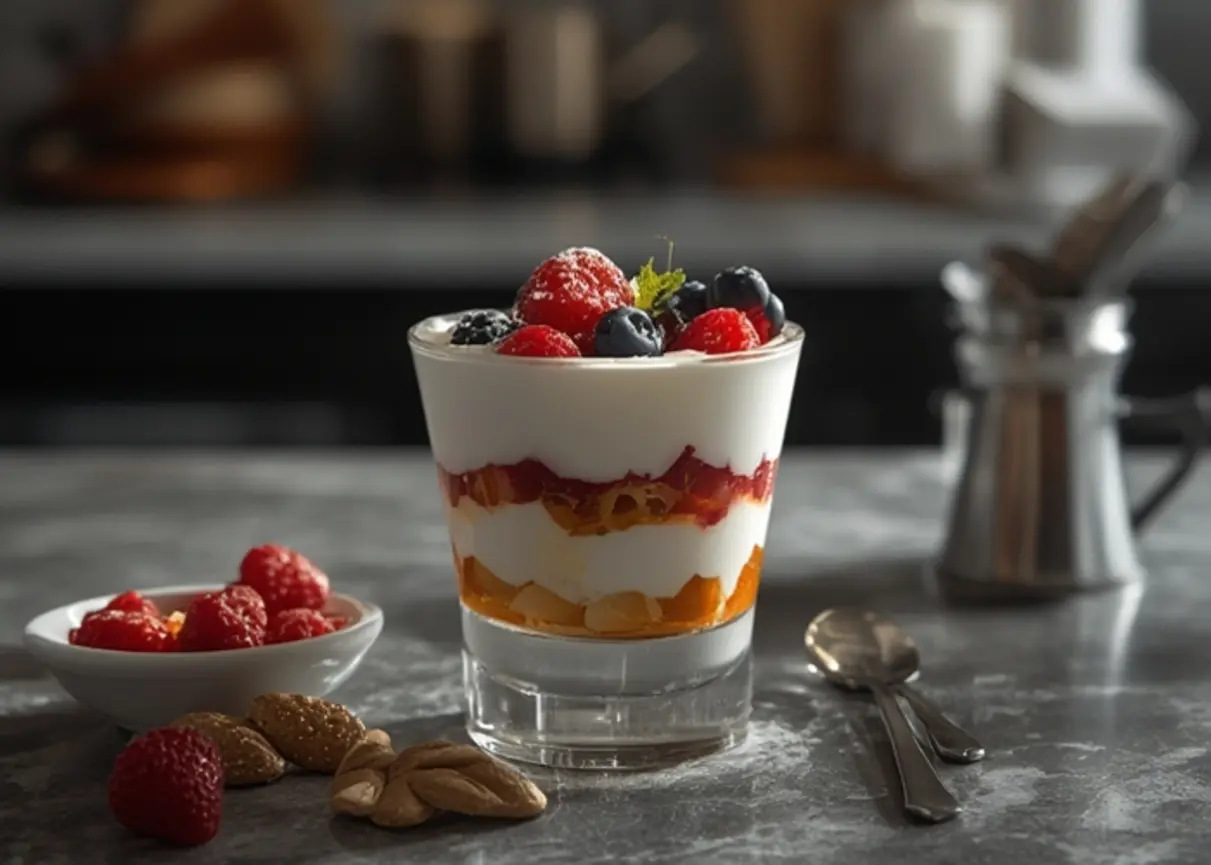
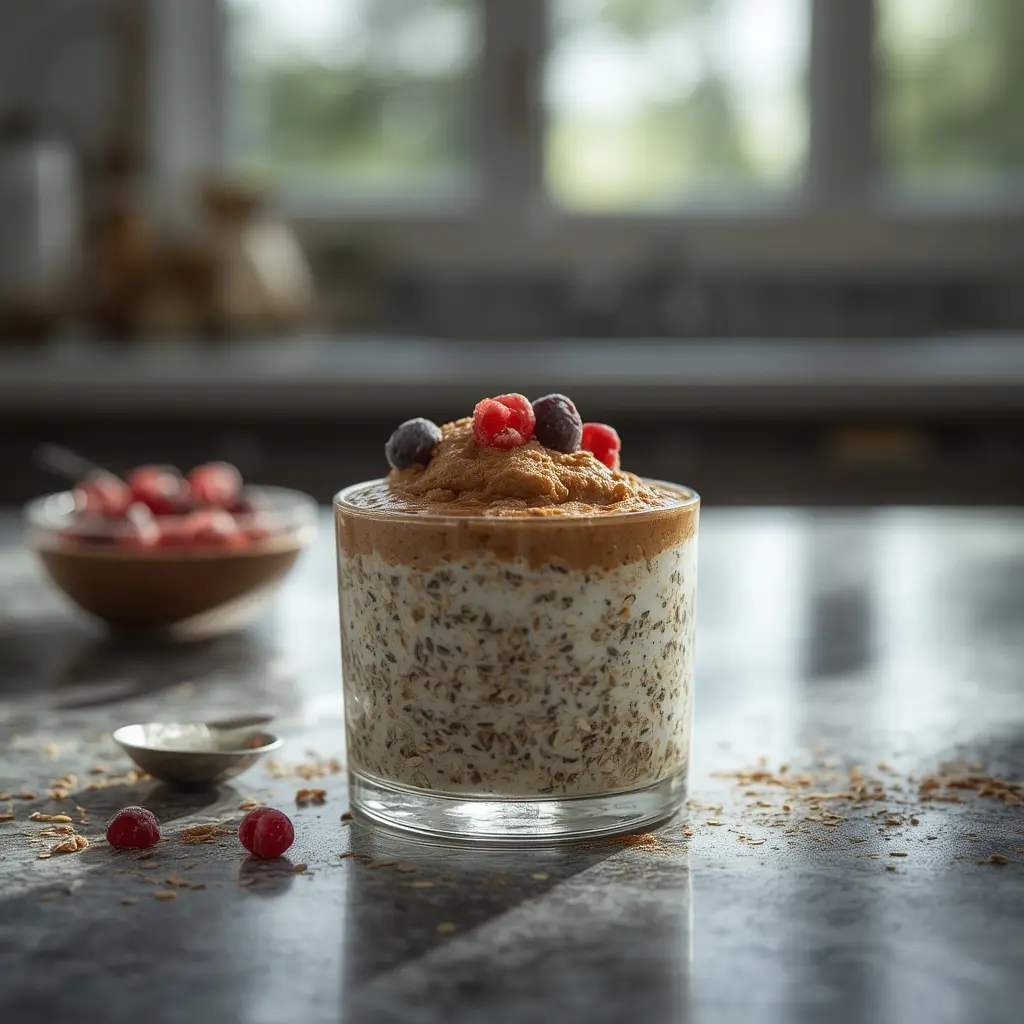
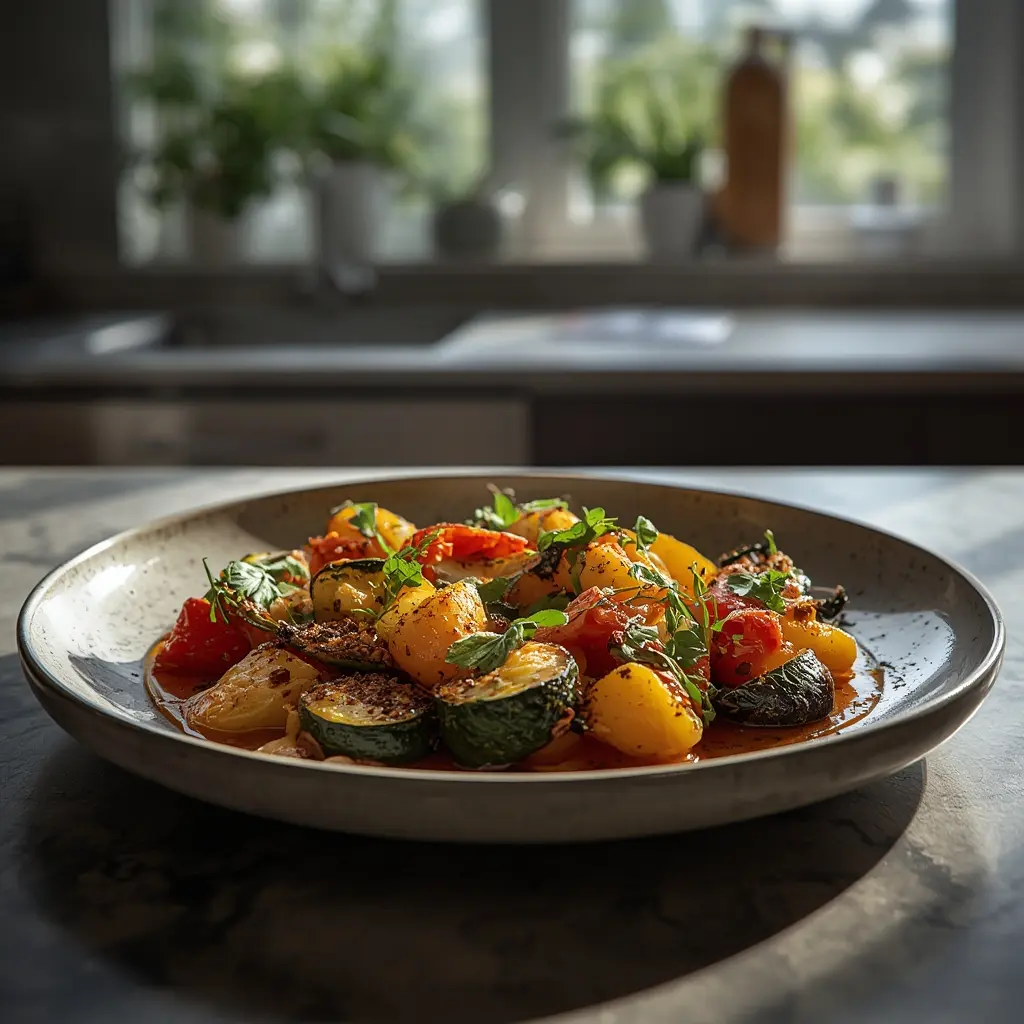
Comments are closed.